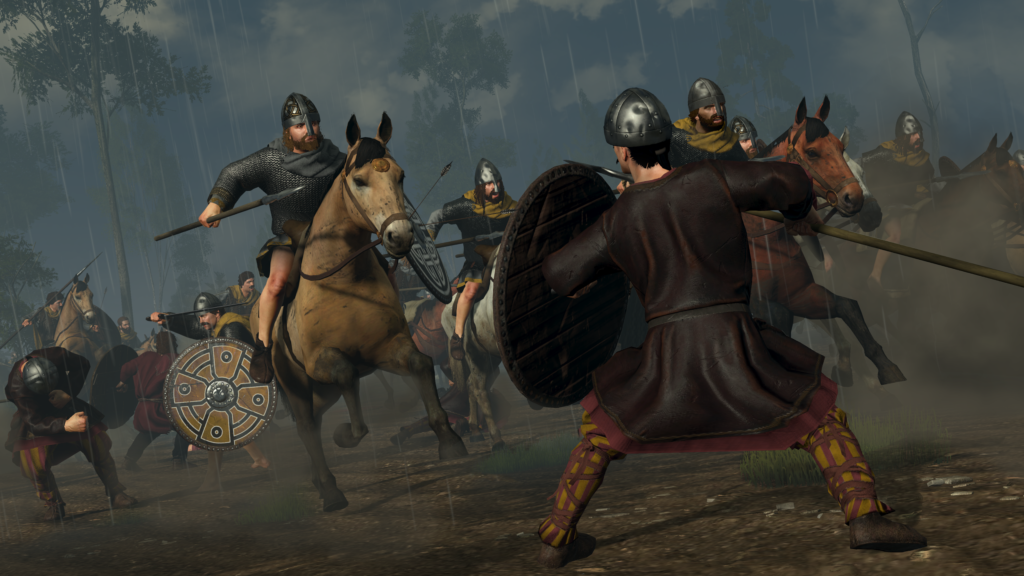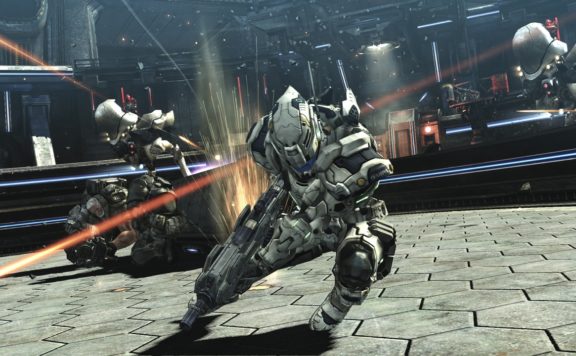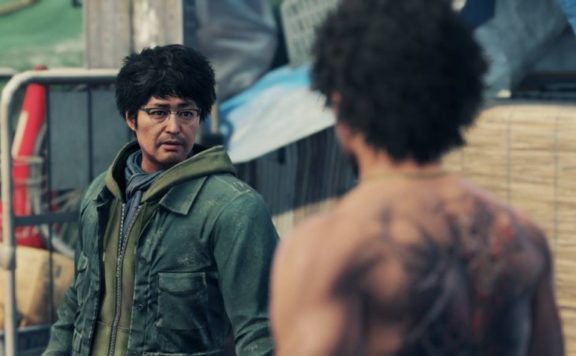The year is 878 AD and an uneasy peace has settled across the British Isles thanks to Alfred the Great’s defeat of the Vikings. Thrones of Britannia sets you in that tumultuous time period, taking control of one of the great Kingdoms of the Isles. But how does it fit into the overall Total War series?
My units stared down their enemy from across the grassy battlefield. We weren’t much, but we were strong. Archers, lances, swordsmen all waiting the Viking onslaught which awaited us as we stood behind the walls of Dyflin (modern-day Dublin) – recently repaired as I had taken the city just two seasons prior. The vikings fell before my archers as company by company broke upon the walls of Dyflin like waves on a beach. However, as their siege towers came close, I knew that the people of Mide were in for a fight. This is but one moment that stood out during a recent play session at SEGA where we were able to hands on with Total War Saga: Thrones of Britannia. But if the rest of the game is anything like this brief hands-on, it’ll be interesting to see just how many memorable moments occur as you vie for dominance of the British Isles.
When Total War Saga: Thrones of Britannia was first announced, I wasn’t entirely sure what to think of it. A stand-alone Total War game set in post-Roman Britannia when the people of what would become England, Scotland, Ireland and Wales were starting to figure out how to fully consolidate and govern their islands after the Viking invasions of Britannia. The year is 878 AD and Alfred the Great has just defeated the Great Heathen Army at the battle of Edington and made an uneasy peace with the Vikings. You take the mantle of one of the many kingdoms and tribes of England, Wales, Scotland, Ireland or as one of the Vikings to shape the course of Britannia as you see fit.
Don’t be fooled – Thrones of Britannia isn’t some smaller Total War game to bridge the gap between Warhammer 2 and the upcoming Total War: Three Kingdoms. Total War Saga: Thrones of Britannia aims to hone in on a smaller event in history that may not be large enough for the grand empire building campaigns of Rome II or Medieval – but it certainly doesn’t feel small when you play it. In this way, Thrones of Britannia reminded me of Shogun and its sequel, Shogun II. It felt focused – yet still as complex as one of the major titles in the series proper. Creative Assembly isn’t just creating new unit models, texturing a new map and releasing it either – they have made some pretty substantial changes to Total War with Britannia, some which if carried through to the other titles could fundamentally change how Total War is played moving forward.
One of the biggest new changes is unit recruitment and replenishment. In previous Total War games, you simply recruited units and waited for the turns it took for them to be finished. In some instances, this meant the units were ready at full strength one turn later. Others, the more advanced units, this took a few turns. Now, units are capped in terms of the number you can recruit and put into the field. This cap can be raised by unlocking technologies – no longer is unit recruitment tied directly to the construction of “specialist” buildings. More on this later.
When units are recruited, they appear in your army at 25% strength. The idea here is to give the player the feeling as though they are “mustering” their troops. In history it would take weeks – sometimes months or whole seasons before an army was ready to be fielded. In recent examples, such as World War I, war plans are based on the time it could conceivably take an army to muster and mobilize. In the Middle Ages, as with all of human history, people couldn’t simply be ready to field an army quickly. Supplies had to be gathered, people needed to meet at the mustering point. Armor and weapons needing to be made and distributed. This took time – and the mustering mechanic in Thrones of Britannia is meant to reflect this.
This new change is perhaps the one I had the most issue with coming to grips with during my playthrough. Having played pretty much ever Total War game since the original Shogun released in the late 90s, I am used to just being able to recruit and go. The idea that I would need to wait and muster my units after recruiting them added a layer of strategy I wasn’t expecting – nor was I sure I completely liked in practice. Then again, I have an incredibly hard time being patient in a video game – and this requires that you plan and be patient to fully utilize the army you’re trying to build.
Additionally, gold is no longer the only factor you must look towards in maintaining your army. Food now plays a role in keeping your army going – as soldiers must be fed as well as paid. Structures you build in your provinces can produce food – and it’s incredibly helpful to see as you’re recruiting your army exactly how much gold and food the units require and the impact it’ll have on your economy. This does limit the amount of armies you can field, making your army feel all the more precious. Combined with the time it takes to muster troops and make them field ready, armies now feel more important and less expendable as in previous Total War games as you and your opponents will be less willing to gamble them on meaningless battles – and with the resource restrictions, you’ll likely field less armies overall.

You upgrade your army through the technologies, which Thrones of Britannia has divided into eight Military and six Civic branches. At the start every technology is locked – and it’s not like in previous entries where you can simply click on one to start researching over the course of a few turns. Technologies only become available if certain conditions are met during gameplay. An example given, the Missle Specialists technology, is only available once you’ve been able to recruit a total of ten missile units. Once you unlock it, however, you have access to higher-tier ranged units in the recruitment pool.
Some techs are informed by specific factional differences. Throughout Thrones of Britannia, you’ll have the ability to play as one of ten factions spread across the British Isles. These factions have cultural affinities – such as Welsh, English, Gaelic, Viking and so on. Gaelic factions, such as the Irish or Scottish factions, may have an early focus on the Community civic tech, which requires the player to upgrade a Monastery since Monasteries are present only in Gaelic territory. For West Seaxe to fulfill this they may need to take over a territory which has a monastery in it to fulfill the requirement for the tech.
The provinces of Britannia are also somewhat different than in previous Total War games – a change I personally think is for the better. Provinces consist of their capital and the minor settlements which dot the countryside. These smaller settlements only have one or two building plots and are focused entirely on resource acquisition such as food, gold and smaller religious buildings. This means taking a smaller settlement from an enemy faction has more relevance as you can effectively cut off the resources needed to maintain an army, all while keeping your main force away from assaulting the main capital. Capitals have walls to defend them and six building slots to house finance, infrastructure, production, trade and military buildings.
I found this out first hand in my first dealings with the Vikings to my west took the minor settlement of Ardach from me, causing starvation as food production plummeted. This prompted me to attack the Vikings with an army at less than full strength since my units hadn’t fully mustered at that point. Harassing players by taking these minor settlements can play to your advantage – drawing out enemy armies and fighting them on your terms. It also helps having more resources in your resource pool to boot!
The war with the Vikings was inevitable, I think, even though early on in the play session we had struck a Non-aggression agreement. I was dealing with rebels in the territories to the north and last I needed was the Vikings coming out of Dyflin to worry about to my West. However, I noticed a trait on the Viking leader which I should have paid more attention to – one where he was a “typical Viking” and will always seek out battle if he can. The traits of the characters of the game are a focus of the Thrones of Britannia team, as they are trying to improve the reliability of AI personalities. This means their actions and reactions to events should be, in theory, more believable. This also means they should act more closely in accordance with their traits – much like the Viking leader did when he attacked me two turns after we signed the non-aggression treaty.

Perhaps one of the biggest changes aside from the army mustering is the lack of any Agent-style units. Instead, these roles are part of the followers you choose for your characters in Thrones of Britannia. Characters themselves are treated as full-on entities you can develop over time thanks to the customization tools on offer. You can assign attributes, traits and the aforementioned followers, allowing you to shape the character into the role you want them to play in your Kingdom.
Want a character who is great at governing a province? Spend some time in their Governance attribute. You can push that a step further by assigning him The Scribe follower, which improves the character’s governance and the faction’s overall income. With this, Thrones of Britannia really wants you to think about no just how you use your armies during wartime, but also during the long stretches of uneasy peace with your neighbors.
While my time with Total War Saga: Thrones of Britannia was ultimately brief (especially when you consider how long Total War campaigns can go on for) it left a lasting impression. It’ll be interesting to see how these changes to the Total War formula translate into a few campaign versus a dozen or so turns. Thrones of Britannia is definitely set in an interesting time period – one that is in the zeitgeist thanks to shows like The Last Kingdom and Vikings – and while the game might have a smaller geographical scope than previous entries in the series, it certainly doesn’t feel small in practice. Players will be able to get their hands on Thrones of Britannia and start shaping the kingdoms of what would become Great Britain and Ireland April 19th, 2018.







